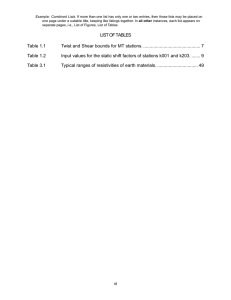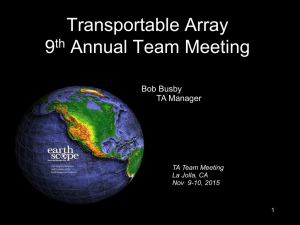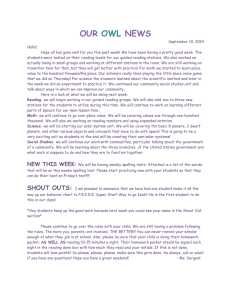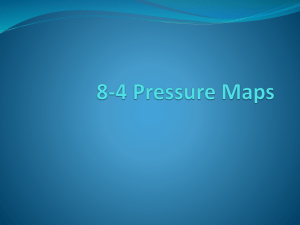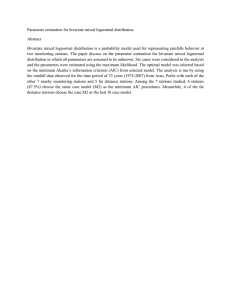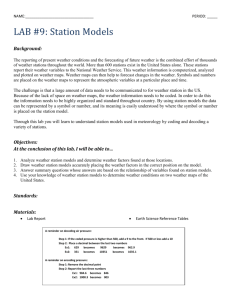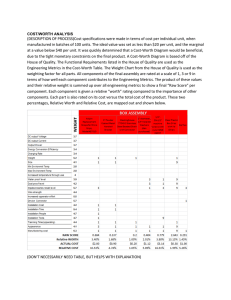Student Activity/Worksheet 2
advertisement
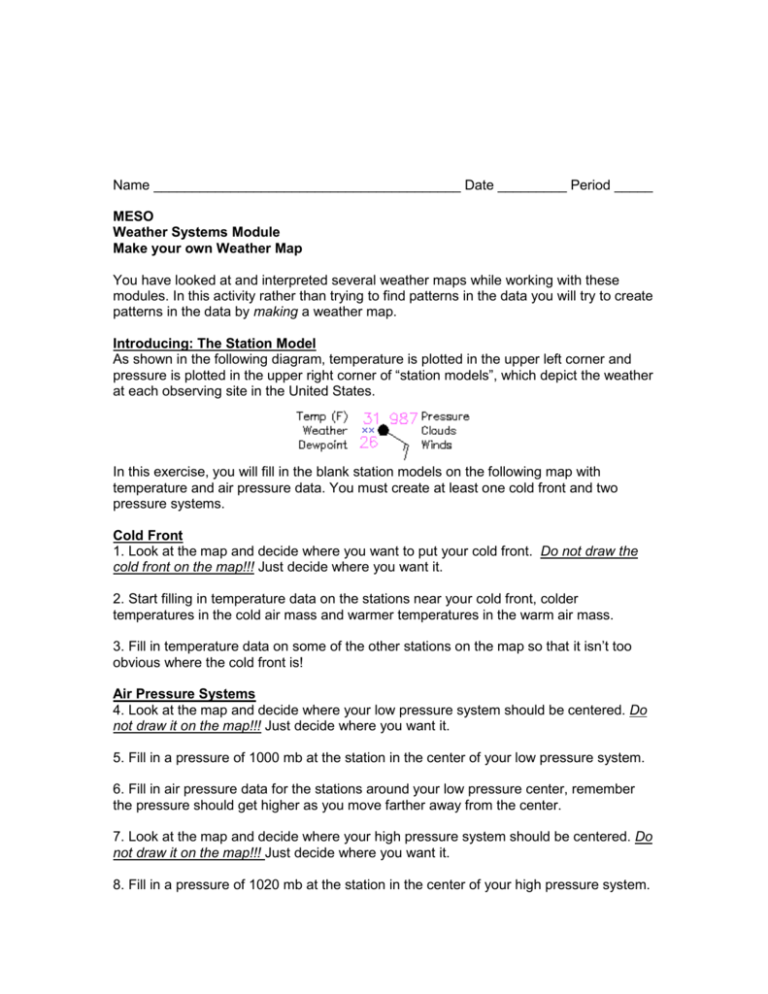
Name ________________________________________ Date _________ Period _____ MESO Weather Systems Module Make your own Weather Map You have looked at and interpreted several weather maps while working with these modules. In this activity rather than trying to find patterns in the data you will try to create patterns in the data by making a weather map. Introducing: The Station Model As shown in the following diagram, temperature is plotted in the upper left corner and pressure is plotted in the upper right corner of “station models”, which depict the weather at each observing site in the United States. In this exercise, you will fill in the blank station models on the following map with temperature and air pressure data. You must create at least one cold front and two pressure systems. Cold Front 1. Look at the map and decide where you want to put your cold front. Do not draw the cold front on the map!!! Just decide where you want it. 2. Start filling in temperature data on the stations near your cold front, colder temperatures in the cold air mass and warmer temperatures in the warm air mass. 3. Fill in temperature data on some of the other stations on the map so that it isn’t too obvious where the cold front is! Air Pressure Systems 4. Look at the map and decide where your low pressure system should be centered. Do not draw it on the map!!! Just decide where you want it. 5. Fill in a pressure of 1000 mb at the station in the center of your low pressure system. 6. Fill in air pressure data for the stations around your low pressure center, remember the pressure should get higher as you move farther away from the center. 7. Look at the map and decide where your high pressure system should be centered. Do not draw it on the map!!! Just decide where you want it. 8. Fill in a pressure of 1020 mb at the station in the center of your high pressure system. 9. Fill in air pressure data for the stations around your high pressure center, remember the pressure should get lower as you move farther away from the center. 10. Fill in air pressure data on some of the other stations on the map so that it isn’t too obvious where the pressure systems are! Exchange Find another student in the class to exchange maps with and begin interpreting their data! 1. Find the cold front and draw it on the map. 2. Find the Low pressure center and draw at least 4 isobars (lines of constant pressure, which separate high from low values) around it. 3. Find the High pressure center and draw at least 4 isobars around it. 4. Make a prediction about what the weather will be like in Raleigh, NC over the next few days and write it on the map. 5. Exchange maps again and grade your partner’s interpretation of your data…How did they do? Extension Add a realistic sky cover and symbols for the observed weather type to your station models. For more help on how to plot station models, including symbols for sky cover and present weather, see: http://www.hpc.ncep.noaa.gov/html/stationplot.shtml
